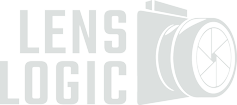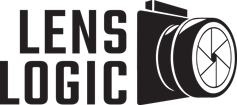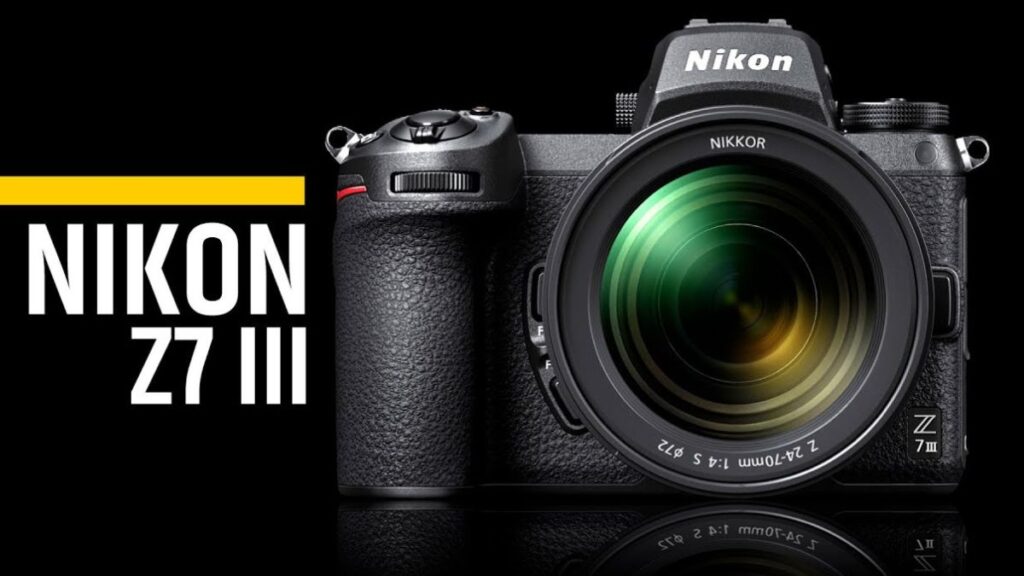The Nikon Z7 II was already a strong competitor in the high-resolution mirrorless camera market. With its 45.7-megapixel sensor, excellent dynamic range, and robust autofocus, it became a favorite for landscape, portrait, and studio photographers. However, Nikon is expected to push the limits even further with the highly anticipated Nikon Z7 III. In this article, we will explore the possible upgrades in the Nikon Z7 III, compare them to the Z7 II, and analyze how it might stack up against the Nikon Z9.

Mason knows photography inside and out. With 15 years of hands-on experience, he’s written about cameras, lenses, and gear of all kinds. He even spent five years as a journalist, diving deep into music and writing sharp, engaging stories. Now, Mason shares his photography knowledge, helping readers find the right gear and perfect their skills. He’s also proud of his unbeatable Wordle streak!
Nikon Z7 III: What to Expect in Terms of Features and Upgrades
Rumored Sensor Improvements for the Nikon Z7 III
New Sensor Technology
One of the biggest expectations for the Nikon Z7 III is an upgraded sensor. While the Z7 II already had a 45.7-megapixel sensor, rumors suggest that the Z7 III might push the resolution even higher, possibly to 46-50 megapixels. There are also speculations about a 90-megapixel sensor, though that seems less likely.
A higher-resolution sensor would allow photographers to capture more details, making it ideal for large prints and cropping flexibility. However, increasing megapixels can also introduce noise at higher ISOs, so Nikon would need to implement improved noise reduction and signal processing.
Improved Dynamic Range
Dynamic range is crucial for photographers who shoot in challenging lighting conditions, such as landscapes at sunrise or sunset. If the Z7 III includes a new sensor with improved dynamic range, it could allow for better highlight and shadow recovery, giving photographers more flexibility in post-processing.
ISO Performance
Portrait and studio photographers often work in controlled but dim lighting. If Nikon improves the Z7 III’s sensor to handle high ISO levels with less noise, it could be a game-changer for low-light photography. A cleaner ISO 6400 or even 12800 would make the camera more versatile for professionals who rely on high-resolution imagery in various lighting conditions.
Will the Nikon Z7 III Include 8K Video or Just Enhanced 4K?
Is 8K Possible?
The Nikon Z9 and Z8 have already introduced 8K video recording, leading some to speculate whether the Z7 III will also include this feature. However, given that the Z7 series is focused more on high-resolution photography rather than video, Nikon may prioritize enhancing 4K video performance instead of adding 8K.
What We Expect
A more likely upgrade is 4K at 120 frames per second. This would be beneficial for slow-motion videography, making the Z7 III more appealing to filmmakers. Additionally, improved bit depth (such as 10-bit 4:2:2) and better internal recording options could enhance its video performance.
Who Will Benefit?
If Nikon enhances its 4K video features, the Z7 III will attract videographers looking for a balance between resolution and usability. This would make it a great option for product videography, interviews, and cinematic content creation, without the heavy processing demands of 8K footage.
How the Nikon Z7 III’s Autofocus Could Outperform the Z7 II
Autofocus Evolution
The Z7 II already had a solid autofocus system, but improvements are always welcome. The Z7 III could feature better subject tracking, enhanced eye autofocus, and faster focusing in low-light conditions.
Nikon’s latest autofocus technology in the Z9 and Z8 has significantly improved subject recognition and tracking, so it’s possible that the Z7 III will benefit from a similar system, making it more reliable for portrait and wildlife photographers.
Improved Continuous Shooting
The Z7 II offered a burst rate of 10 frames per second (fps), which was decent for a high-resolution camera. However, the Z7 III might push this up to 12-14 fps, making it more capable for capturing action shots, such as wildlife or fashion photography.
Speed vs Resolution
One challenge with high-resolution cameras is maintaining fast processing speeds while handling large file sizes. Nikon may introduce a more powerful processor in the Z7 III to ensure quick image processing without compromising resolution.
Potential Upgrades in Stabilization and Handling for the Z7 III
In-Body Stabilization
The Z7 II had 5-axis in-body image stabilization (IBIS), which helped reduce camera shake. However, there are rumors that the Z7 III might feature an improved stabilization system, possibly offering 6-8 stops of stabilization.
This would be a major advantage for handheld shooting, especially for landscape and low-light photographers who prefer using slower shutter speeds without a tripod.
Ergonomics and Build Quality
While Nikon’s Z-series cameras already have solid ergonomics, minor improvements in button layout, grip comfort, and weather sealing could make the Z7 III more user-friendly. If Nikon enhances the build quality, it could make the camera even more durable for photographers who work in harsh outdoor conditions.
Nikon Z7 III vs Z7 II: What Are the Key Differences?
Sensor and Image Quality
It is expected that the Z7 III will either slightly increase this resolution to around 46-50MP or introduce a newer sensor technology that improves overall image quality rather than just focusing on higher megapixels.
One of the biggest challenges with increasing resolution is balancing low-light performance and noise control at higher ISOs. While the Z7 II already handled high ISOs well, the Z7 III might introduce better backside-illuminated (BSI) sensor technology or even stacked sensor innovations to improve sensitivity, reducing noise in low-light conditions.
Autofocus and Speed
While the Z7 II’s autofocus was good, it sometimes struggled with fast-moving subjects, particularly in low-contrast environments. The Z7 III could feature better AI-driven autofocus algorithms, allowing for more accurate subject detection, improved animal and bird tracking, and enhanced low-light AF performance.
Another rumored upgrade is the burst shooting speed. The Z7 II maxed out at 10 fps, which was already decent for a high-resolution camera, but the Z7 III might push this to 12-14 fps. A higher frame rate would help photographers capture fast-moving subjects with more accuracy, particularly in portrait, fashion, wildlife, and street photography.
Video Improvements
While the Z7 series has always been focused on still photography, video capabilities are becoming more important in modern mirrorless cameras. The Z7 II already had 4K 60p, but the Z7 III could introduce 4K 120p, allowing for ultra-smooth slow-motion footage.
There is also speculation about 8K video, though this seems less likely. If Nikon does include 8K recording, it could be at 30fps, but it might require heavy processing power, which could lead to overheating concerns. Instead, Nikon may choose to focus on higher-quality 4K recording, possibly with 10-bit 4:2:2 internal recording, improved color science, and better heat management for extended recording times.
How Does the Z7 III Compare to the Z9?
Resolution vs Speed: Z9’s Strengths
The Z9 features a 45.7MP sensor, similar to the Z7 II, but it stands out due to its stacked sensor technology and blazing-fast readout speeds. This allows the Z9 to shoot at 30 fps in JPEG and 20 fps in RAW—a huge advantage for sports and wildlife photographers.
The Z7 III, on the other hand, will likely maintain a high-resolution focus, possibly increasing beyond 46-50MP, but with a more moderate burst rate (likely 12-14 fps).
Another major advantage of the Z9 is its fully electronic shutter, which eliminates shutter shock and enables silent shooting at high speeds. The Z7 III may not adopt this feature entirely but could improve shutter response times and blackout-free shooting.
Who is the Z7 III For?
If the Z9 is designed for speed, the Z7 III is designed for detail. Here’s a breakdown of which type of photographer would benefit from each camera:
- Landscape Photographers: The Z7 III’s likely higher resolution and improved dynamic range will make it the preferred choice for those who need extreme detail and color depth.
- Portrait and Studio Photographers: With better skin tone rendering, high-resolution files, and improved low-light autofocus, the Z7 III will be ideal for studio work.
- Wildlife and Sports Photographers: The Z9’s superior burst rate (20-30 fps) and tracking autofocus make it the better choice for capturing fast action. However, the Z7 III could still be viable for wildlife photographers who prioritize fine detail over speed.
- Videographers: If the Z7 III introduces 4K 120p and better color grading options, it will appeal to videographers who don’t need the Z9’s 8K but still want high-quality video.
Expected Release Date and Pricing for the Nikon Z7 III
Speculative Timeline
Nikon has not yet announced an official release date for the Z7 III. However, based on previous Z-series camera release cycles, many industry experts predict a launch in late 2025 or early 2026.
The Z7 II was released in late 2020, so a 5-6 years gap for an upgrade aligns with Nikon’s product refresh timeline. However, if Nikon wants to stay competitive with Sony and Canon, they might push for an earlier release, possibly in mid-to-late 2025.
Price Predictions
The Nikon Z7 II launched at around $2,999. If the Z7 III includes major upgrades like a higher-resolution sensor, better video features, and improved autofocus, it’s likely that Nikon will price it slightly higher. A reasonable estimate for the Z7 III’s starting price would be $3,200 to $3,500. If Nikon introduces stacked sensor technology or 8K video, the price could go even higher, possibly reaching $3,800.
Conclusion: Why the Z7 III Will Be Nikon’s Best High-Res Mirrorless Camera
With potential improvements in resolution, autofocus, video capabilities, and stabilization, the Nikon Z7 III looks ready to be an exciting upgrade. If Nikon delivers on these expectations, it could be the ultimate high-resolution mirrorless camera for landscape, portrait, and studio photographers.
While we must wait for Nikon’s official announcement, the rumored specs indicate that the Z7 III will be a worthy successor to the Z7 II. Stay tuned for more updates on the Nikon Z7 III! What features are you hoping for? Let us know in the comments!


